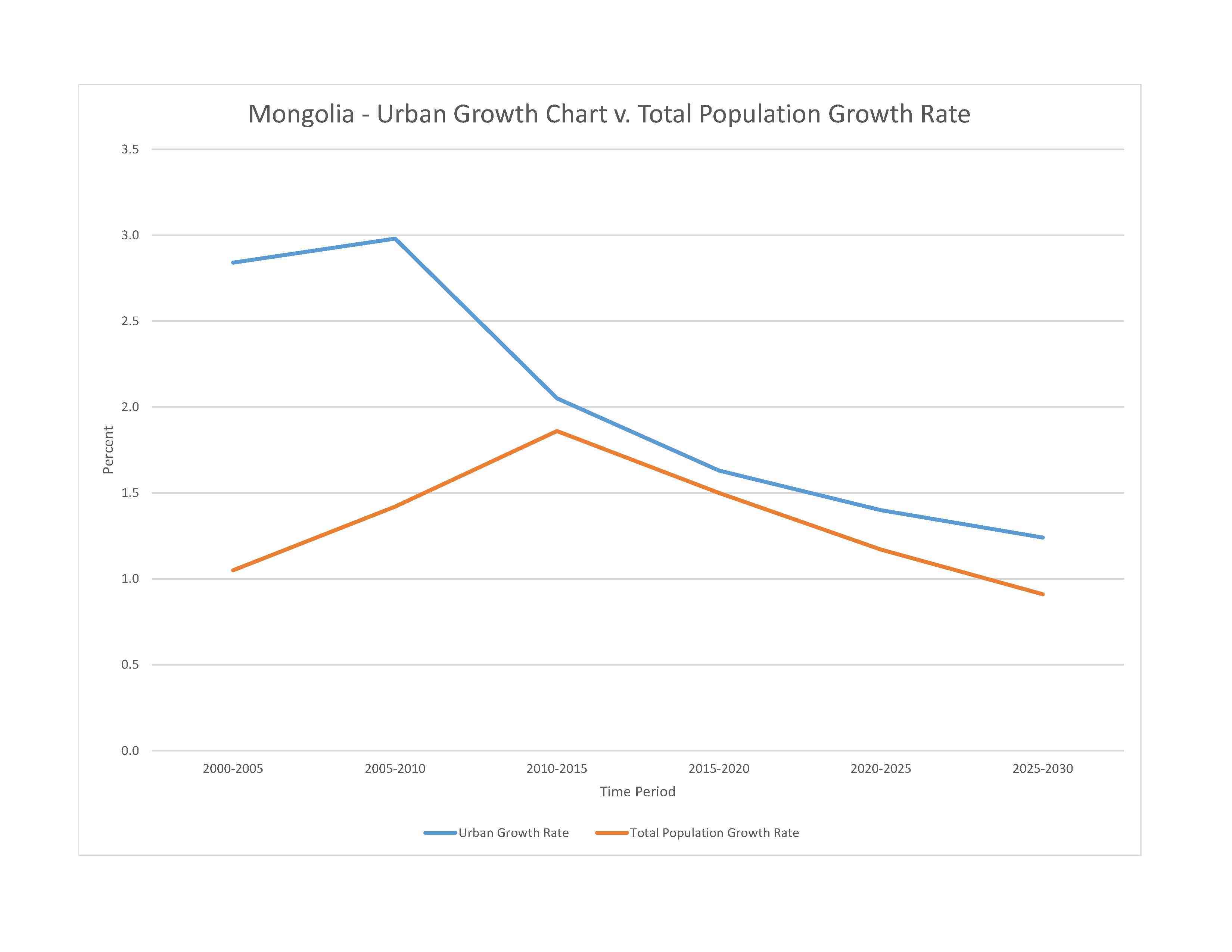
3,255,468 (2023 est.)
note: Mongolia is one of the least densely populated countries in the world (2 people per sq km); twice as many ethnic Mongols (some 6 million) live in Inner Mongolia (Nei Mongol) in neighboring China
noun: Mongolian(s)
adjective: Mongolian
Khalkh 83.8%, Kazak 3.8%, Durvud 2.6%, Bayad 2%, Buriad 1.4%, Zakhchin 1.2%, Dariganga 1.1%, other 4.1% (2020 est.)
Mongolian 90% (official) (Khalkha dialect is predominant), Turkic, Russian (1999)
major-language sample(s):
Дэлхийн баримтат ном, үндсэн мэдээллийн зайлшгүй эх сурвалж. (Mongolian)
The World Factbook, the indispensable source for basic information.
Buddhist 51.7%, Muslim 3.2%, Shamanist 2.5%, Christian 1.3%, other 0.7%, none 40.6% (2020 est.)
0-14 years: 26.16% (male 434,400/female 417,335)
15-64 years: 68.24% (male 1,076,692/female 1,144,759)
65 years and over: 5.6% (2023 est.) (male 73,245/female 109,037)
total dependency ratio: 58.4
youth dependency ratio: 51.4
elderly dependency ratio: 7
potential support ratio: 14.3 (2021 est.)
total: 31.2 years (2023 est.)
male: 29.9 years
female: 32.2 years
0.83% (2023 est.)
15.4 births/1,000 population (2023 est.)
6.3 deaths/1,000 population (2023 est.)
-0.8 migrant(s)/1,000 population (2023 est.)
sparsely distributed population throughout the country; the capital of Ulaanbaatar and the northern city of Darhan support the highest population densities
urban population: 69.1% of total population (2023)
rate of urbanization: 1.4% annual rate of change (2020-25 est.)

1.673 million ULAANBAATAR (capital) (2023)
at birth: 1.05 male(s)/female
0-14 years: 1.04 male(s)/female
15-64 years: 0.94 male(s)/female
65 years and over: 0.67 male(s)/female
total population: 0.95 male(s)/female (2023 est.)
20.5 years (2008 est.)
note: data represents median age at first birth among women 20-24
39 deaths/100,000 live births (2020 est.)
total: 19.8 deaths/1,000 live births (2023 est.)
male: 22.8 deaths/1,000 live births
female: 16.6 deaths/1,000 live births
total population: 71.7 years (2023 est.)
male: 67.5 years
female: 76 years
1.89 children born/woman (2023 est.)
0.92 (2023 est.)
48.1% (2018)
improved: urban: 98.4% of population
rural: 64.2% of population
total: 87.6% of population
unimproved: urban: 1.6% of population
rural: 35.8% of population
total: 12.4% of population (2020 est.)
4.9% of GDP (2020)
3.85 physicians/1,000 population (2018)
8 beds/1,000 population (2017)
improved: urban: 97.4% of population
rural: 69.9% of population
total: 88.8% of population
unimproved: urban: 2.6% of population
rural: 30.1% of population
total: 11.2% of population (2020 est.)
20.6% (2016)
total: 5.46 liters of pure alcohol (2019 est.)
beer: 2.18 liters of pure alcohol (2019 est.)
wine: 1.46 liters of pure alcohol (2019 est.)
spirits: 1.82 liters of pure alcohol (2019 est.)
other alcohols: 0 liters of pure alcohol (2019 est.)
total: 29.4% (2020 est.)
male: 51.7% (2020 est.)
female: 7.1% (2020 est.)
1.8% (2018)
58.9% (2023 est.)
women married by age 15: 0.9%
women married by age 18: 12%
men married by age 18: 2.1% (2018 est.)
4.7% of GDP (2020 est.)
definition: age 15 and over can read and write
total population: 99.2%
male: 99.1%
female: 99.2% (2020)
total: 15 years
male: 14 years
female: 16 years (2019)
NOTE: The information regarding Mongolia on this page is re-published from the 2024 World Fact Book of the United States Central Intelligence Agency and other sources. No claims are made regarding the accuracy of Mongolia 2024 information contained here. All suggestions for corrections of any errors about Mongolia 2024 should be addressed to the CIA or the source cited on each page.
This page was last modified 04 May 24, Copyright © 2024 ITA all rights reserved.